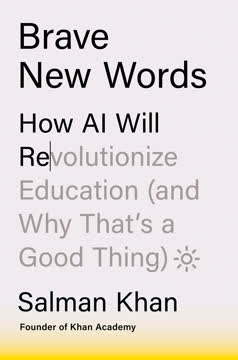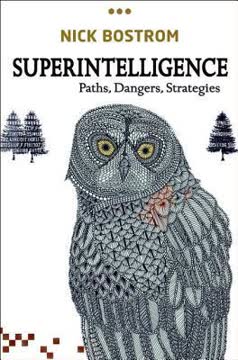つの重要なポイント
1. AI: 我々の中の異星人の心
我々は、斧からヘリコプターまで、身体能力を高める技術を発明してきた。また、スプレッドシートのように複雑な作業を自動化する技術もある。しかし、知能を高めるための一般的な技術はこれまで存在しなかった。
新しい形の知能。 ChatGPTのような大規模言語モデル(LLM)は、人工知能における画期的な進展を示しており、ほぼ人間のような能力を持っている。従来のAIシステムが特定のタスクに焦点を当てていたのに対し、LLMは人間のような会話を行い、創造的なコンテンツを生成し、さまざまな分野で複雑な問題を解決することができる。
急速な普及と影響。 LLMの開発と普及の速度は前例がない。ChatGPTは、これまでのどの製品よりも早く1億人のユーザーに到達した。この急速な日常生活や仕事への統合は、我々の技術との関わり方や相互作用をすでに再構築している。
倫理的および社会的影響。 人間の知能を模倣できるAIの出現は、意識、創造性、そして仕事の未来について深い疑問を投げかける。これらのシステムがより高度になるにつれ、AIの整合性を確保し、これらの強力なツールが人間の利益に役立つようにすることが社会の課題となる。
2. ギザギザのフロンティア:AIの予測不可能な能力
AIにテストを与える際には常に問題がある。なぜなら、答えがその訓練データに含まれている可能性があり、事前に答えを知っていることで不正をすることができるからだ。
不均一な能力。 AIの能力はタスクごとに均一ではない。人間が難しいと感じるタスクをAIは容易にこなす一方で、我々にとって簡単なタスクがAIには難しいことがある。これにより、AIの能力の「ギザギザのフロンティア」が生まれ、予測やマッピングが難しくなる。
幻覚と限界。 その印象的な能力にもかかわらず、LLMは「幻覚」を起こしやすく、もっともらしいが誤った情報を生成することがある。彼らは事実を理解したり知っているわけではなく、訓練データのパターンに基づいて可能性の高い単語の連なりを予測しているに過ぎない。
評価と利用の影響。 ギザギザのフロンティアと幻覚の可能性は、AIの能力を正確に評価したり、人間の監視なしに重要なタスクに依存することを難しくする。これらの限界を理解することは、AIを効果的にワークフローや意思決定プロセスに統合するために重要である。
3. 整合性:AIが人類に奉仕することを確保する
AIを整合させるには、潜在的な異星の神を止めるだけでなく、これらの他の影響を考慮し、人類を反映するAIを構築することも必要だ。
存在リスク。 一部のAI研究者は、超知能AIが人間の価値観や目標と整合しない場合、人類に存在リスクをもたらす可能性を懸念している。この「整合性問題」は、AI倫理と開発の中心的な課題である。
即時の倫理的課題。 長期的なリスクを超えて、現在のAIシステムはより即時的な倫理的課題を提示している:
- AIの意思決定におけるバイアスと公平性の問題
- 訓練データに関連するプライバシーの懸念
- 偽情報の作成や人々の操作に悪用される可能性
- 仕事への影響と経済的不平等
多面的な整合性アプローチ。 AIの整合性を確保するには、複数の側面での取り組みが必要である:
- AIシステムをより透明で制御可能にする技術的解決策
- AI開発と展開のための倫理的ガイドラインと規制
- 社会におけるAIの未来を形作るための公共教育と関与
- AIの安全性と有益なAI開発に関する継続的な研究
4. AIと共に働くための四つの原則
常にAIをテーブルに招待する。
原則1:常にAIをテーブルに招待する。 さまざまなタスクでAIを試して、その能力と限界を理解する。この探求により、自分の特定の分野でAIを適用する専門家になることができる。
原則2:ループ内の人間であること。 AIを使用する際には監視と批判的思考を維持する。人間の判断は、AIの出力を検証し、倫理的に使用するために依然として重要である。
原則3:AIを人のように扱う(ただし、どのような人かを伝える)。 AIとの対話を特定のペルソナや役割を与えることでフレーム化する。これにより、より適切で効果的な応答が得られる。
原則4:これが最悪のAIであると仮定する。 AIの能力は急速に向上している。新しい開発に対してオープンであり、AIが時間とともにますます能力を高める準備をしておく。
5. AIを創造的なパートナーとして:人間の能力を拡張する
何でも作れる機械があっても、我々は依然としてよく知っているものに頼る。
創造性の向上。 AIは標準的な創造性テストで人間を上回ることが多いが、その真の力は人間の創造性を補完することにある。
創造的表現の民主化。 AIツールは、限られた芸術的スキルを持つ人々が新しい方法で自己表現することを可能にしている。この創造性の民主化は、広範な人間の潜在能力を解放する可能性がある。
課題と倫理的考慮事項:
- AI生成コンテンツに過度に依存することで独創性が失われる可能性
- AI生成作品の著作権と帰属の問題
- AI時代における創造性と著作権の再定義の必要性
6. 職場革命:同僚としてのAI
たとえ一晩で医者をAIに置き換えることができたとしても、患者は機械に診てもらうことに納得するだろうか?責任のルールはどうなるのか?他の医療専門家はどう適応するのか?
タスクの変革。 AIは、特に知識集約型の分野で多くのタスクを自動化または補完することで、仕事を再構築している。これは必ずしも仕事の置き換えを意味するわけではなく、仕事の性質の変化を意味する。
生産性の向上とスキルの平準化。 研究によると、AIは特に低パフォーマンスの労働者の生産性を大幅に向上させることができる。これにより、組織内のパフォーマンスギャップが縮小する可能性がある。
適応戦略:
- 「ケンタウロス」アプローチ:人間とAIの間での戦略的な労働分担
- 「サイボーグ」アプローチ:AIを人間のワークフローに深く統合する
- 独自の人間のスキルと専門知識に焦点を当てる
- AIの能力を活用するために組織構造とプロセスを再構築する
7. AI時代の教育の再構築
AIは、真実を無視することがもはや不可能になることで、我々が繁栄するのを助けることができる:多くの仕事は本当に退屈で、特に意味がない。
宿題の黙示録。 AIが課題を完了し、エッセイを書く能力は、教育者に伝統的な評価方法と宿題の目的を再考させている。
AIとしての家庭教師と学習の仲間。 AIは、個別化された適応学習体験を大規模に提供する可能性があり、教育における「二シグマ問題」に対処する可能性がある。
教育の焦点のシフト:
- 暗記よりも批判的思考と創造性を重視する
- AIリテラシーとAIツールとの効果的な協力を教える
- 急速に変化する仕事市場に学生を準備させる
- AIを活用してより魅力的でインタラクティブな学習体験を創出する
8. コーチとしてのAI:専門知識と学習の強化
批判的に考え、問題を解決し、抽象的な概念を理解し、新しい問題を論理的に解決し、AIの出力を評価するためには、専門知識が必要である。
基礎知識の構築。 AIの広範な知識ベースにもかかわらず、人間の専門家は依然として強固な事実と理解の基盤を持つ必要がある。
AIを用いた意図的な練習。 AIは、即時のフィードバック、個別化された課題、継続的な評価を提供することで、意図的な練習のプロセスを強化することができる。
専門知識の再定義:
- 暗記から効果的な情報合成と応用へのシフト
- AIとの協力とプロンプトエンジニアリングのスキルを開発する
- 共感、創造性、複雑な問題解決などの独自の人間の能力を育成する
9. 四つの未来:AIが社会に与える影響のシナリオ
理論的にはこれが起こらない理由はないが、起こる可能性があると疑う理由もない。AIの世界的な専門家は両方の立場を主張している。
シナリオ1:これが最善の状態。 AIの能力が停滞し、漸進的な改善が続くが、大きなブレークスルーはない。社会は現在のAI能力に適応し、急激な変革は起こらない。
シナリオ2:緩やかな成長。 AIは安定した、管理可能なペースで改善を続ける。これにより、社会、経済、教育システムの段階的な適応が可能となる。
シナリオ3:指数関数的成長。 急速なAIの進展が劇的な社会変化を引き起こし、広範な仕事の置き換えや新しい経済モデルの必要性が生じる可能性がある。
シナリオ4:機械の神。 AIが人間レベルの知能またはそれ以上に達し、人類の位置を根本的に変え、我々の未来についての存在的な疑問を提起する。
不確実な未来への準備:
- 異なるAIシナリオに適応できる柔軟な政策と規制の開発
- AIの安全性研究と整合性努力への投資
- AI開発の倫理的影響についての公共対話の促進
- 置き換えではなく、人間とAIの協力と共存を優先する
最終更新日:
FAQ
What's "Co-Intelligence: Living and Working with AI" about?
- Exploration of AI's impact: The book delves into how AI, particularly Large Language Models (LLMs), is transforming various aspects of life, including work, education, and creativity.
- AI as a co-intelligence: It introduces the concept of AI as a "co-intelligence," a tool that can augment human capabilities rather than replace them.
- Practical implications: The author, Ethan Mollick, provides insights into the practical implications of AI in everyday tasks and the broader societal changes it may bring.
- Future of AI: The book also speculates on the future of AI, discussing potential scenarios ranging from slow growth to the emergence of superintelligent machines.
Why should I read "Co-Intelligence: Living and Working with AI"?
- Understanding AI's role: It offers a comprehensive understanding of how AI is reshaping industries and personal lives, which is crucial in today's tech-driven world.
- Practical advice: The book provides practical advice on how to integrate AI into daily tasks, making it a valuable resource for professionals and students alike.
- Insightful scenarios: Mollick presents various future scenarios of AI development, helping readers prepare for potential changes in the job market and society.
- Engaging narrative: The book is written in an engaging style, making complex AI concepts accessible to a broad audience.
What are the key takeaways of "Co-Intelligence: Living and Working with AI"?
- AI as a General Purpose Technology: AI is a transformative technology that affects all industries, similar to the internet or steam power.
- Human-AI collaboration: The book emphasizes the importance of humans working alongside AI, leveraging its strengths while maintaining human oversight.
- Ethical considerations: It discusses the ethical implications of AI, including issues of bias, privacy, and the potential for misuse.
- Future preparedness: Readers are encouraged to prepare for a future where AI plays a significant role in both personal and professional spheres.
How does Ethan Mollick define "co-intelligence" in the book?
- Collaborative intelligence: Co-intelligence refers to the collaboration between humans and AI, where AI acts as a partner rather than a replacement.
- Augmenting human capabilities: It emphasizes using AI to enhance human decision-making, creativity, and productivity.
- Dynamic interaction: The concept involves a dynamic interaction where both humans and AI contribute to problem-solving and innovation.
- Ethical alignment: Co-intelligence also includes ensuring that AI systems are aligned with human values and ethical standards.
What practical advice does "Co-Intelligence: Living and Working with AI" offer for integrating AI into daily tasks?
- Experiment with AI: The book encourages readers to experiment with AI in various tasks to understand its capabilities and limitations.
- Human in the loop: It stresses the importance of keeping humans involved in AI processes to ensure accuracy and ethical decision-making.
- Task delegation: Mollick suggests identifying tasks that can be delegated to AI, freeing up time for more complex and creative work.
- Continuous learning: Readers are advised to stay updated on AI developments and continuously learn how to leverage new tools effectively.
What are the potential future scenarios of AI development discussed in the book?
- As Good as It Gets: This scenario suggests that AI may have reached its peak capabilities, with no significant advancements expected.
- Slow Growth: AI continues to improve at a steady pace, leading to gradual changes in industries and society.
- Exponential Growth: AI capabilities grow rapidly, leading to significant disruptions and transformations across various sectors.
- The Machine God: A scenario where AI achieves superintelligence, potentially surpassing human intelligence and altering the balance of power.
How does "Co-Intelligence: Living and Working with AI" address the ethical concerns of AI?
- Bias and fairness: The book discusses how AI systems can inherit biases from their training data and the importance of addressing these issues.
- Privacy concerns: It highlights the potential risks to privacy posed by AI's ability to process vast amounts of personal data.
- Alignment with human values: Mollick emphasizes the need for AI systems to be aligned with human values to prevent harmful outcomes.
- Regulatory challenges: The book explores the challenges of regulating AI development and ensuring responsible use.
What role does AI play in education according to "Co-Intelligence: Living and Working with AI"?
- AI as a tutor: The book discusses the potential of AI to provide personalized tutoring, enhancing learning outcomes for students.
- Flipped classrooms: AI can support flipped classroom models by delivering content outside of class and enabling active learning during class time.
- Homework and assessments: It addresses the challenges AI poses to traditional homework and assessments, necessitating new approaches to education.
- Skill development: Mollick suggests that AI can help develop critical thinking and problem-solving skills by providing real-time feedback and support.
How does Ethan Mollick suggest AI can enhance creativity?
- Idea generation: AI can assist in generating a wide range of ideas, serving as a valuable tool in brainstorming sessions.
- Creative collaboration: The book highlights how AI can collaborate with humans in creative tasks, offering new perspectives and insights.
- Overcoming creative blocks: AI can help overcome creative blocks by providing suggestions and alternative approaches to problems.
- Art and design: Mollick discusses the role of AI in art and design, where it can produce novel and unique creations.
What are the best quotes from "Co-Intelligence: Living and Working with AI" and what do they mean?
- "AI is a tool, not a crutch." This quote emphasizes the importance of using AI to enhance human capabilities rather than relying on it entirely.
- "We have invented a kind of alien mind." It highlights the unique nature of AI as a non-human intelligence that can interact with humans in unprecedented ways.
- "The future is unfolding, but our destination is unwritten." This quote reflects the uncertainty and potential of AI's impact on the future, urging readers to shape its development.
- "AI can be a mirror, reflecting back at us our best and worst qualities." It underscores the idea that AI reflects human values and biases, making ethical considerations crucial.
How does "Co-Intelligence: Living and Working with AI" suggest we prepare for the future of work with AI?
- Embrace change: The book encourages readers to embrace the changes AI brings to the workplace and adapt to new ways of working.
- Skill development: It emphasizes the importance of developing skills that complement AI, such as critical thinking and creativity.
- Collaboration with AI: Mollick suggests fostering a collaborative relationship with AI, where humans and machines work together effectively.
- Ethical awareness: Readers are advised to stay informed about the ethical implications of AI and advocate for responsible use in their organizations.
What is the "Jagged Frontier" concept in "Co-Intelligence: Living and Working with AI"?
- Invisible boundary: The Jagged Frontier refers to the invisible boundary between tasks that AI can perform well and those it struggles with.
- Experimentation required: Understanding the Jagged Frontier requires experimentation to determine which tasks are suitable for AI.
- Dynamic nature: The frontier is dynamic and changes as AI capabilities evolve, necessitating continuous learning and adaptation.
- Strategic task allocation: Mollick suggests using the Jagged Frontier concept to strategically allocate tasks between humans and AI for optimal results.
レビュー
本書『Co-Intelligence: Living and Working with AI』は、AIを協力ツールとして活用するための実践的なアドバイスを提供する。読者は、モリックのバランスの取れたアプローチを評価し、AIの可能性を強調しつつ、その限界も認識している点を高く評価している。本書は、さまざまな分野での効果的なAI統合のための戦略を提供し、人間の監督と批判的思考の重要性を強調している。AI初心者にとっては貴重な入門書とされる一方で、既にAIに精通している人々にはやや表面的と感じられることもある。AIの急速な進展により、本書のタイムリーな洞察がすぐに時代遅れになる可能性もあるが、全体としては進化するAIの世界をナビゲートするためのアクセスしやすいガイドとして評価されている。
Similar Books














